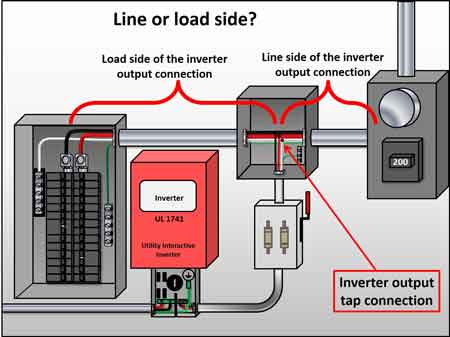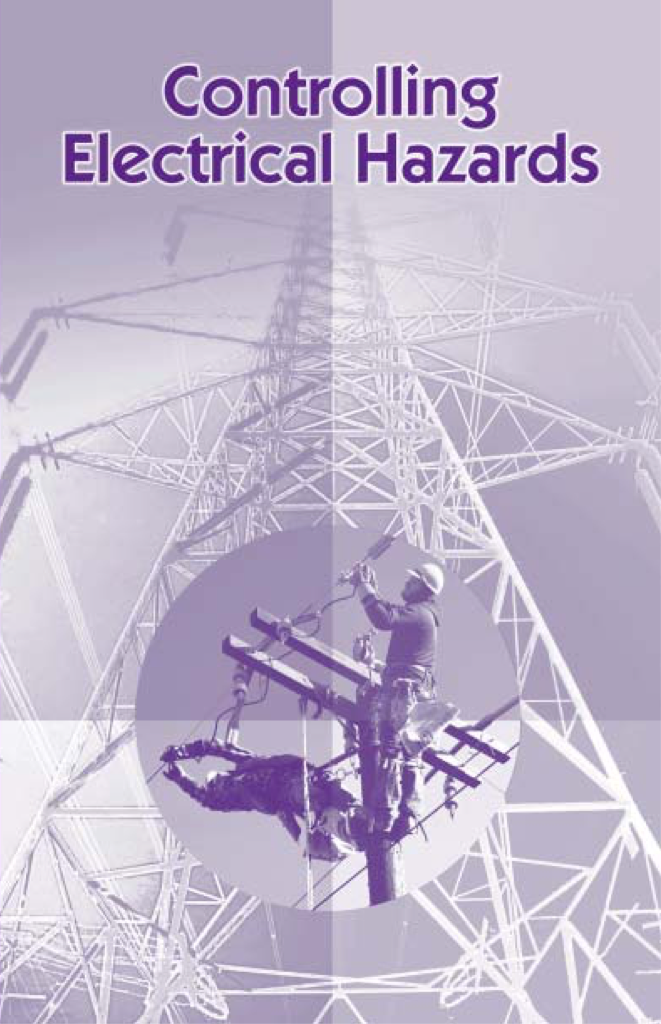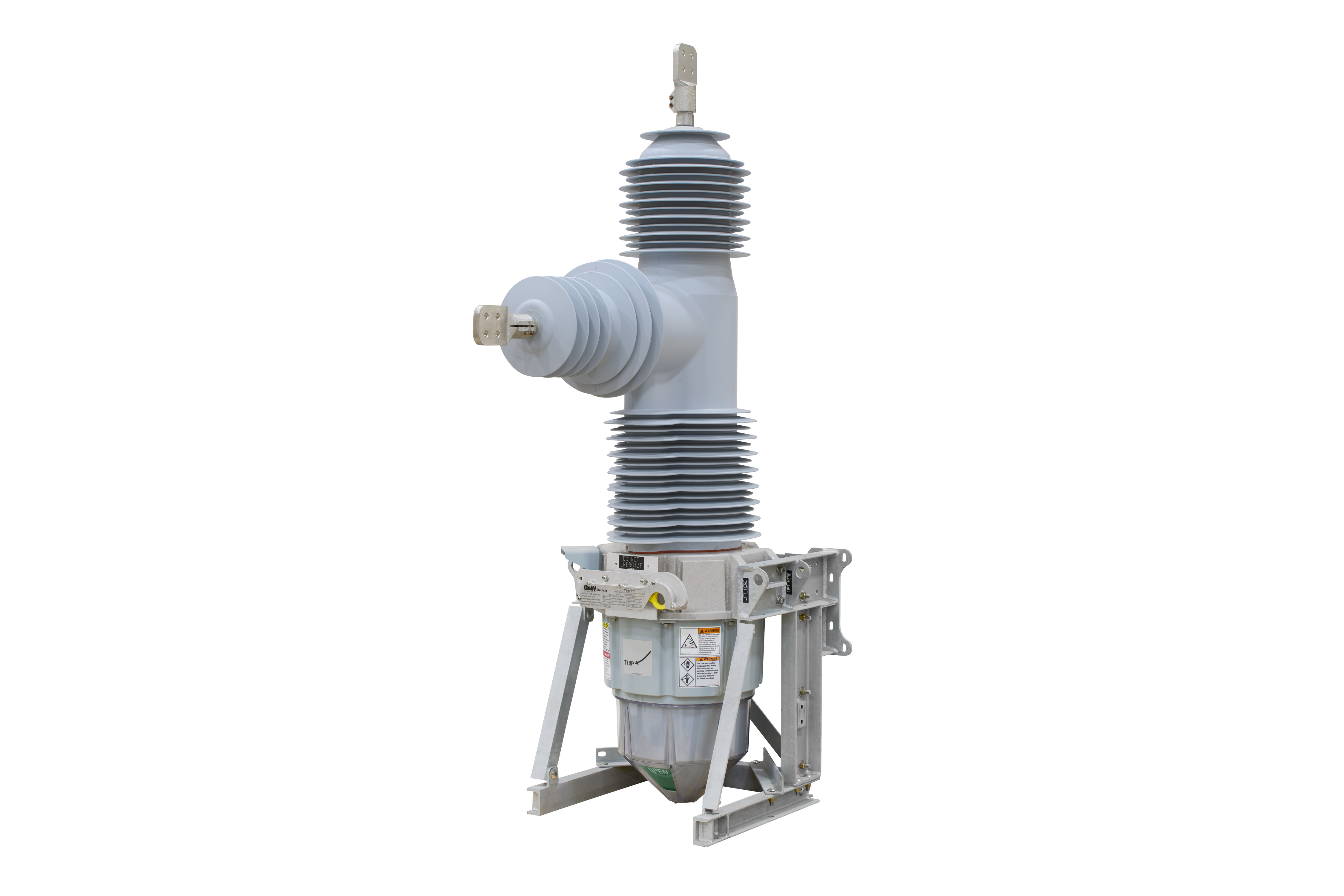Can You Load Side Tap a Breaker in Distribution Protection?

Protective Relay Training - Basic
Our customized live online or in‑person group training can be delivered to your staff at your location.

- Live Online
- 12 hours Instructor-led
- Group Training Available
Download Our OSHA 3075 Fact Sheet – Understanding Electrical Hazards in the Workplace

- Learn the effects of electric current on the human body
- Understand OSHA safety standards and protective devices
- Discover essential lockout/tagout and grounding practices
Can You Load Side Tap a Breaker? Generally no unless lugs are UL-listed for multiple conductors. Follow NEC 110.14 and 240.21 tap rules; use subfeed lugs or a distribution block to avoid unsafe double-lugging.
Can You Load Side Tap a Breaker?
No—unless lugs are listed for two conductors; use tap rules or a listed distribution block.
✅ Verify UL-listed multi-wire lugs; never double-lug unlisted terminals.
✅ Apply NEC 110.14 torque, and 240.21 tap conductor sizing.
✅ Use subfeed lugs or a listed distribution/junction block.
Can you load side tap a breaker? This is a question that often arises in electrical work, and understanding the answer is crucial for any electrician. A load side tap (LST) can be a valuable technique for adding circuits and managing electrical loads, but they also come with potential risks and code requirements that must be carefully considered. In this article, we'll delve into the intricacies of LSTs, exploring their differences from feeder taps, their relationship to the main service panel, common mistakes to avoid, appropriate applications, and even advanced techniques for experienced professionals. By understanding these key aspects, electricians can ensure safe and compliant installations while maximizing the efficiency of their electrical systems. For readers new to the topic, understanding how a circuit breaker operates helps clarify why taps must be coordinated with protective devices.
LSTs are a common technique in electrical power distribution, but they often cause confusion and raise safety concerns. This article aims to clarify some key aspects of LSTs, including their differences from feeder taps, their relationship to main service panels, common mistakes to avoid, when to use them, and advanced techniques.
FREE EF Electrical Training Catalog
Download our FREE Electrical Training Catalog and explore a full range of expert-led electrical training courses.

- Live online and in-person courses available
- Real-time instruction with Q&A from industry experts
- Flexible scheduling for your convenience
Load Side Taps vs. Feeder Taps: A Clear Comparison
One of the most common points of confusion surrounding LSTs is their distinction from feeder taps. Both involve tapping into a conductor to draw power, but the key difference lies in where the tap occurs relative to the overcurrent protection device (OCPD). A LST connects to the load side of an OCPD, meaning after the breaker or fuse. In contrast, a feeder tap connects on the line side, before the OCPD. This distinction is crucial because it affects how the tap is protected and the applicable code requirements. Feeder taps often have less stringent requirements due to their location and purpose, usually supplying another panel or large load. LSTs, however, require careful consideration to ensure proper overcurrent protection and compliance with the National Electrical Code (NEC). Because the tap is downstream of the OCPD, you must verify that the upstream device provides appropriate overcurrent protection for both the feeder and the tap conductors.
Load Side Tap Vs Main Service Panel Breaker
Another important aspect to understand is the relationship between a LST and the main service panel breaker. The main breaker provides overcurrent protection for the entire electrical system in a building. A LST, however, is typically installed further downstream on a branch circuit. This means that the LST is subject to the protection provided by the branch circuit breaker, not the main breaker. It's crucial to ensure that the branch circuit breaker is properly sized to protect both the original circuit and the added load from the tap. Failure to do so can lead to overloading and potential fire hazards. Selecting among various circuit breaker types also influences coordination and available ratings for a safe LST installation.
Top 10 LST Mistakes to Avoid
LSTs, when done incorrectly, can pose significant safety risks. Here are some of the most common mistakes to avoid:
Before tapping, perform a basic short-circuit analysis to confirm the available fault current does not exceed equipment ratings.
- Incorrect breaker sizing: Using a breaker that is too large for the tap conductor can lead to overheating and fire.
- Improper conductor ampacity: Using undersized wires for the tap can also cause overheating.
- Ignoring NEC regulations: Failing to follow the NEC guidelines for tap length, conductor size, and overcurrent protection can result in unsafe installations.
- Poor connections: Loose or corroded connections can create high resistance points, leading to heat buildup and potential fire hazards.
- Lack of proper grounding: Inadequate grounding can create shock hazards.
- Overloading the circuit: Adding too much load to the tap can exceed the capacity of the branch circuit breaker.
- Using the wrong type of tap connector: Using unsuitable connectors can result in poor connections and potential fire hazards.
- Not considering future load increases: Failing to account for potential future load increases can lead to overloading the circuit later on.
- Lack of documentation: Not properly documenting the tap installation can make future troubleshooting and maintenance difficult.
- Insufficient clearances: Not maintaining proper clearances around the tap can create safety hazards.
By avoiding these common mistakes, electricians can ensure safe and code-compliant LST installations.
When to Choose a LST?
While LST s can be a useful technique, they are not always the best solution. Here are some situations where a LST might be appropriate:
- Adding a small load to an existing circuit: When adding a small appliance or device, a LST can be a convenient way to connect it without running a new circuit.
- Temporary connections: For temporary installations, such as during construction or events, LSTs can provide a flexible solution.
- Space constraints: In situations where space is limited, a LST can be a more compact solution than installing a new breaker.
In constrained panels, resources on compact breaker configurations can help you plan additions without exceeding enclosure limits.
Test Your Knowledge About Electrical Protection!
Think you know Electrical Protection? Take our quick, interactive quiz and test your knowledge in minutes.
- Instantly see your results and score
- Identify strengths and areas for improvement
- Challenge yourself on real-world electrical topics
However, it's important to carefully evaluate the specific application and ensure that a LST is the safest and most code-compliant option. In some scenarios, a load-break switch may be a better fit for isolation and maintenance needs.
Advanced LST Techniques
For experienced electricians, there are advanced techniques that can be used in specific situations. These might include:
- Multiple taps on a single breaker: In certain cases, it may be permissible to install multiple taps on a single breaker, but this requires careful load calculations and adherence to NEC guidelines.
- Using tap boxes: Tap boxes can provide a safe and organized way to manage multiple taps on a single circuit.
- Integrating load side taps with renewable energy systems: LSTs can be used in conjunction with solar panels or other renewable energy sources to connect them to the existing electrical system.
These advanced techniques require a thorough understanding of the NEC and best practices for electrical installations. That understanding should include robust short-circuit protection strategies to ensure devices clear faults safely.
Questions:
What are the common applications for a LST on breakers?
Load side taps are commonly used for adding small loads to existing circuits, temporary connections, and in situations where space is limited.
Is it safe and code-compliant to add a LST to a breaker?
Yes, it can be safe and code-compliant if done correctly. It is crucial to follow NEC guidelines for conductor sizing, overcurrent protection, and installation methods.
What are the potential risks and limitations associated with load side tapping a breaker?
Potential risks include overloading the circuit, overheating conductors, and fire hazards if not done properly. Limitations include restrictions on the length and size of the tap conductor, as well as the types of loads that can be connected.







